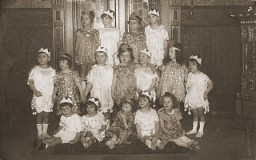You searched for: 3粉大咖引戰【TG飞机:@bapingseo】谷歌seo免费工具【TG电报:@bapingseo】南亚国外灰产【Telegram:@bapingseo】22年世界杯e乐彩线路检测路径?7sEVOj/539316.html
<< Previous | Displaying results 401-450 of 643 for "3粉大咖引戰【TG飞机:@bapingseo】谷歌seo免费工具【TG电报:@bapingseo】南亚国外灰产【Telegram:@bapingseo】22年世界杯e乐彩线路检测路径?7sEVOj/539316.html" | Next >>
-
Madeline Deutsch describes adjusting to social and educational life after the war
Oral HistoryMadeline was born into a middle class family in an area of Czechoslovakia that was annexed by Hungary in 1938-1939. Her father worked out of their home and her mother was a homemaker. Madeline attended high school. In April 1944 her family was forced into a Hungarian ghetto. The family lived in the ghetto for two weeks before being transported to Auschwitz. Madeline and her mother were separated from her father and older brother. Neither her father nor brother survived the war. A week after arriving in…
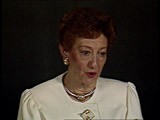
-
Hajj Amin al-Husayni: Arab Nationalist and Muslim Leader
ArticleHajj Amin al-Husayni claimed to speak for the Arab nation and the Muslim world and sought an alliance with the Axis powers during WWII. Learn more about his actions

-
Auschwitz
ArticleThe Auschwitz camp system, located in German-occupied Poland, was a complex of 3 camps, including a killing center. Learn about the history of Auschwitz.
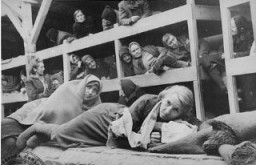
-
African Americans in Nazi Germany
ArticleLearn about African Americans' experiences in Nazi Germany before and during World War II.

-
Barbara Ledermann Rodbell describes receiving her first set of false papers
Oral HistoryIn 1933 Barbara's family moved to Amsterdam, in the Netherlands. They became friends of Anne Frank and her family. The Germans invaded the Netherlands in 1940. Barbara's boyfriend, Manfred, had underground contacts and she got false papers. Her mother, sister, and father were deported to Westerbork and then to Auschwitz. Barbara survived using her false papers and worked for the resistance. She helped take Jews to hiding places and also hid Jews in an apartment held in her false name.
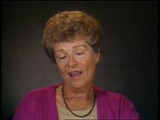
-
Albert Gani
ID CardAlbert and his family lived in Preveza, a town with a Jewish population of 300 that was located on the Ionian seashore. Albert's father had a small textile shop. The Ganis were of Romaniot descent, Jews whose ancestors had lived in Greece and the Balkans for more than a thousand years. 1933-39: After graduating from high school, Albert assisted his father in the family textile shop. A quiet and reserved young man, Albert enjoyed spending time at home with his family. Albert loved taking excursions with…
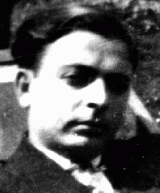
-
Joseph Gani
ID CardJoseph and his family lived in Preveza, a town with a Jewish population of 300 that was located on the Ionian seashore. Joseph's father had a small textile shop. The Ganis were of Romaniot descent, Jews whose ancestors had lived in Greece and the Balkans for more than a thousand years. 1933-39: Joseph attended Greek public school in Preveza. He also received a religious education; the local rabbi would come to the public school for several hours a week to give religious instruction to the Jewish students.…
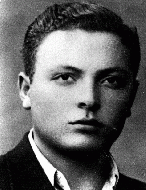
-
Johann Stossier
ID CardJohann was born to Catholic parents in the part of Austria known as Carinthia, where he was raised on the family farm. Johann enjoyed acting and belonged to a theater group in nearby Sankt Martin, which also happened to have a Jehovah's Witness congregation. He became a Jehovah's Witness during the late 1920s, actively preaching in the district around Sankt Martin. 1933-39: Johann continued to do missionary work for the Jehovah's Witnesses even after this was banned by the Austrian government in 1936. The…

-
Ossi Stojka
ID CardOssi was the youngest of six children born to Roma ("Gypsies") who traveled in a family wagon. His family was Roman Catholic. Their caravan spent winters in Vienna, Austria's capital, and summers in the Austrian countryside. The Stojkas belonged to a tribe called the Lowara Roma, who made their living as itinerant horse traders. Ossi's ancestors had lived in Austria for more than 200 years. 1933-39: Ossi was 2 years old when Germany annexed Austria in March 1938. The Stojka family wagon was parked for the…

-
Rozia Susskind
ID CardRozia was born to a Jewish family in the town of Kolbuszowa. Her family lived outside of town, near her uncles. The Susskinds owned a flour mill and a lumber mill. Their home was one of the few in the area with electricity, which was generated at their mills. Rozia had an older sister, Hanka, and an older brother, Yanek. 1933-39: In the early 1930s, the Susskinds' mills burned down. Hanka moved to Cracow to study in the university and married, and Yanek was working in Kolbuszowa's Jewish bank. The…

-
Rudolf Acohen
ID CardRudolf, known as Rudi, and his brother were born in Amsterdam to a Jewish family of Spanish descent. The family lived in a pleasant neighborhood in the southern part of the city. Rudi attended Montessori grade school and high school. 1933-39: For summer vacation in 1935 Rudi's parents rented a house near the beach in Zandvoort, near Amsterdam. There he met a girl, Ina, and they became good friends. In the summer they discovered that they would be attending the same Montessori high school. Rudi and Ina and…
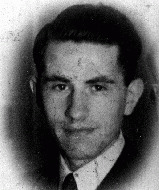
-
Moise Gani
ID CardMoise's family were Romaniot Jews, a group that had lived in Greek cities and the Balkans for 1,100 years. In the early 1920s Moise's family moved to Italy, where his father tried to find work. Moise attended school, and when his family returned to Greece after two years, he remained in Italy to complete school. When Moise returned to Preveza at age 17, he had forgotten Greek. 1933-39: Moise worked as a bookkeeper and administrator at the local electric company in Preveza, and he lived with his parents.…
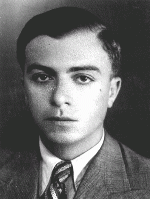
-
Notice of Gregor Wohlfahrt's execution
DocumentAuthorities in Berlin, Germany, sent this notice to Barbara Wohlfahrt, informing her of her husband Gregor's execution on the morning of December 7, 1939. Although he was physically unfit to serve in the armed forces, the Nazis tried Wohlfahrt for his religious opposition to military service. As a Jehovah's Witness, Wohlfahrt believed that military service violated the biblical commandment not to kill. On November 8, 1939, a military court condemned Wohlfahrt to beheading, a sentence carried out one month…

-
German forces in Italy surrender to the Allies
FilmAllied forces occupied most of Germany by the end of April 1945. German forces fighting in Italy were the first to surrender unconditionally to the Allies. Representatives of the German command in Italy signed the surrender on April 29, and it became effective on May 2, 1945. Five days later, on May 7, 1945, Germany surrendered unconditionally to the western Allies, ending the war in Europe.
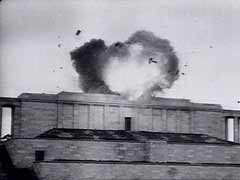
-
Remilitarization of the Rhineland
FilmProvisions of the 1919 Treaty of Versailles forbade Germany (defeated in World War I) to station armed forces in a demilitarized zone in the Rhineland—a region in western Germany bordering France, Belgium, and part of the Netherlands. The treaty stipulated that Allied forces—including US troops—would occupy the region. In a blatant violation of the treaty, on March 7, 1936, Hitler ordered German troops to reoccupy the zone. Hitler gambled that the western powers would not intervene. His action…
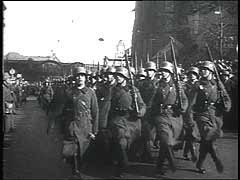
-
German territorial losses, Treaty of Versailles, 1919
MapView map showing German territorial losses following the Treaty of Versailles after World War I. Learn how the treaty affected lands controlled by Germany

-
Operation Torch: The Anglo-American Invasion of French North Africa
ArticleOperation Torch was the Allied invasion of French Morocco and Algeria during the North African Campaign of World War II. Learn more.
-
SS and Nazi Policy
ArticleThe SS was the elite guard of the Nazi regime and became a virtual state within a state in Nazi Germany. Learn about its role in carrying out Nazi policies.

-
Berlin
ArticleBerlin was home to Germany’s largest Jewish community. It was also the capital of the Third Reich and the center for the planning of the "Final Solution."

-
Hungary after the German Occupation
ArticleThe Nazis invaded Hungary in 1944 to prevent the government from negotiating an armistice with the Allies. Learn more about conditions in occupied Hungary.

-
Locating the Victims
ArticleThe Germans and their collaborators used paper records and local knowledge to identify Jews to be rounded up or killed during the Holocaust.

-
Death Marches
ArticleNear the end of WWII, the Germans began marching prisoners out of camps and away from the front. Read more about the brutal conditions of these death marches.

-
Jewish Partisans
ArticleSome Jews who managed to escape from ghettos and camps formed their own fighting, or partisan, units during World War II. Learn about life as a partisan.
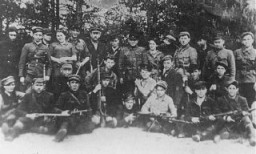
-
Belzec: Key Dates
ArticleExplore key events in the history of the Belzec killing center in the Nazi camp system. It was constructed for the sole purpose of murdering Jews.

-
Zeilsheim Displaced Persons Camp
ArticleAfter WWII, many Holocaust survivors, unable to return to their homes, lived in displaced persons camps in Germany, Austria, and Italy. Read about Zeilsheim DP camp.
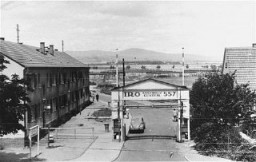
-
Treaty of Versailles Presented to German Delegation
Timeline EventMay 7, 1919. On this date, the Treaty of Versailles was presented to the German delegation. The treaty's "War Guilt Clause" forced Germany to accept responsibility for initiating WWI.

-
The 42nd Infantry Division during World War II
ArticleThe 42nd Infantry Division participated in major WWII campaigns and is recognized for liberating the Dachau concentration camp in 1945.
-
Pogroms
ArticleThe term “pogrom” historically refers to violent attacks on Jews by local non-Jewish populations. Learn about pogroms before, during, and after the Holocaust.
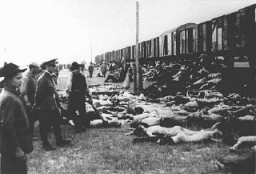
-
Sandor (Shony) Alex Braun describes playing the violin for SS guards in Dachau. after two prisoners before him had been killed
Oral HistoryShony was born to religious Jewish parents in a small Transylvanian city. He began to learn the violin at age 5. His town was occupied by Hungary in 1940 and by Germany in 1944. In May 1944, he was deported to the Auschwitz camp in Poland. He was transferred to the Natzweiler camp system in France and then to Dachau, where he was liberated by US troops in April 1945. In 1950, he immigrated to the United States, and became a composer and a professional violinist.

-
Operation Reinhard (Einsatz Reinhard)
ArticleNazi Germany established the killing centers of Belzec, Sobibor, and Treblinka as part of “Operation Reinhard,” the plan to murder all Jews in the General Government.
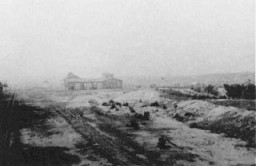
-
Betje Jakobs
ID CardBetje and her sister Saartje were born to Jewish parents in the town of Zwolle in the Netherlands' north central province of Overijssel. Betje was known affectionately as "Bep" to her friends. The Jakobs family owned a successful sporting goods store. 1933-39: As a young girl, Betje enjoyed playing the piano, knitting and tennis. At age 16, while still in secondary school, she began to date Maurits Wijnberg, a boy two years her senior, whose family owned Zwolle's Hotel Wijnberg. 1940-42: The Germans…
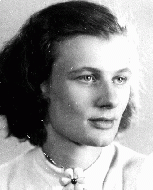
-
Mendel Grynberg
ID CardMendel was raised in a large, Yiddish-speaking, religious Jewish family in Sokolow Podlaski, a manufacturing town in central Poland with a large Jewish population of about 5,000. Upon completing school, Mendel worked as a shoemaker. He was also active in a local Zionist organization. 1933-39: Mendel was married and had a family when the Germans invaded Poland on September 1, 1939. Aircraft bombed the town's market and other civilian targets before victorious German troops marched into Sokolow Podlaski on…
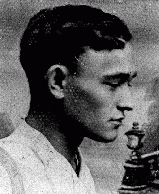
-
Benjamin Soep
ID CardBenjamin, called "Benno" by his family and friends, grew up in a religious Jewish household in Amsterdam. Benno's father, a successful diamond manufacturer, was president of the Amsterdam Jewish community. Benno had two younger sisters and enjoyed collecting stamps. 1933-39: After he obtained some work experience in a department store, Benno joined his father in the diamond business. Benno adhered strictly to Jewish law. He loved tennis and skiing, and in 1938, while skiing in Switzerland, he met a girl…
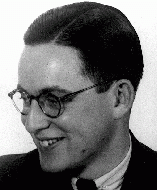
-
Rachel Lea Galperin
ID CardRachel, born Rachel Karpus, was born to a Jewish family in the northeastern Polish city of Vilna. At the age of 16, Rachel married Reuven Galperin, a typesetter for a Jewish newspaper in the city, and the couple subsequently had 16 children. Only nine of the children lived to the 1930s. 1933-39: In addition to caring for her children, Rachel also operated a small grocery on Nowigorod Street. In 1938 Rachel's husband died. One year later, on September 1, 1939, Germany invaded Poland and 17 days after that…
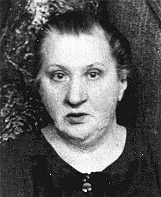
-
Beads used by a Dutch Jewish girl in hiding
ArtifactThese tiny black, white, gold, and clear glass beads were used by Rachel “Chelly” de Groot from November 1942 to April 1944 and recovered by her brother Louis after the war. Chelly used the beads to make handicrafts. On November 16, 1942, Chelly, then 15, Louis, 13, and their parents Meijer and Sophia left Arnhem and went into hiding after the Dutch police warned them of a raid. Meijer and Sophia hid in Amsterdam while Chelly and Louis moved around to different locations. In summer or fall 1943,…
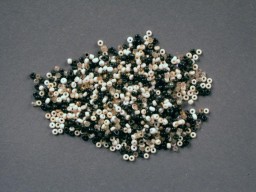
-
Sally Izikowitz
ID CardSally was an only son born to Jewish parents in the Baltic port of Liepaja. When Sally was a child, his family moved to Aizpute, a small town 25 miles northeast of Liepaja. There his parents, along with a partner, opened a dry-goods store. Sally attended a German-language private Jewish school in Aizpute. 1933-39: The Izikowitz's store was well-known in the city. People purchased fabric there to be made into clothes or furniture coverings. In 1939 Sally graduated secondary school. Germany invaded Poland…
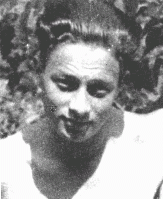
-
Henry Morgenthau Jr.
ArticleHenry Morgenthau Jr had a key role in creating and operating the War Refugee Board, a government agency tasked with rescuing and providing relief for Jews during the Holocaust.
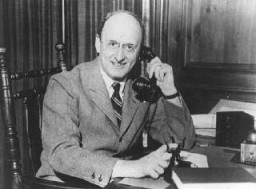
-
German military court trial of French resistance members
FilmFrance signed an armistice with Germany on June 22, 1940, recognizing the right of German authorities to oversee the French administration. Further, German military authorities held jurisdiction over matters of internal security. In this footage, a German military court in Paris tries French citizens charged with resisting measures of the military occupation. Despite harsh military justice, the Germans could not quell opposition in France, and resistance activities would reach a peak during the Allied…

-
Nuremberg Trial: Göring testifies
FilmHermann Göring was head of the German air force. He was one of 22 major war criminals tried by the International Military Tribunal at Nuremberg. Here, Göring testifies about his order of July 31, 1941, authorizing Reinhard Heydrich, head of the Reich Security Main Office, to plan a so-called "solution to the Jewish question in Europe." The Tribunal found Göring guilty on all counts and sentenced him to death. Göring committed suicide shortly before his execution was to take place.
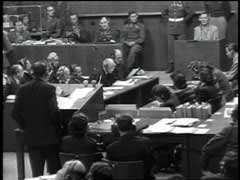
-
German conquests in Europe, 1939-1942
MapIn World War II, Germany sought to defeat its opponents in a series of short campaigns in Europe. Germany quickly overran much of Europe and was victorious for more than two years. Germany defeated and occupied Poland (attacked in September 1939), Denmark (April 1940), Norway (April 1940), Belgium (May 1940), the Netherlands (May 1940), Luxembourg (May 1940), France (May 1940), Yugoslavia (April 1941), and Greece (April 1941). Yet Germany did not defeat Great Britain, which was protected from German ground…

-
Theresienstadt: Establishment
ArticleLearn about the establishment of the Theresienstadt camp/ghetto, which served multiple purposes from 1941-45 and had an important propaganda function for the Germans.

-
Liberation of Nazi Camps
ArticleThe liberation of concentration camps toward the end of the Holocaust revealed unspeakable conditions. Learn about liberators and what they confronted.

-
Vilna
ArticleDuring the Holocaust, the creation of ghettos was a key step in the Nazi process of ultimately destroying Europe's Jews. Learn about the Vilna ghetto.

-
Stutthof
ArticleLearn about the Stutthof camp from its establishment until liberation in May 1945, including conditions, forced labor, subcamps, and death marches.
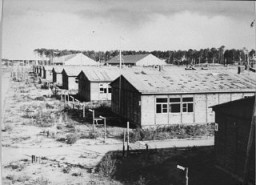
-

-
German Wartime Expansion
ArticleBetween 1939-1942, Nazi Germany invaded multiple countries across Europe. Learn more about German expansion during World War II.

-
History of the United States Holocaust Memorial Museum
ArticleThe United States Holocaust Memorial Museum opened in April 1993. Explore the history of the nation's memorial to the millions murdered during the Holocaust.

-
Jewish Community of Monastir: A Community in Flux
ArticleThe Sephardic Jewish community of Monastir was historically the largest Jewish community in Macedonia. Learn about the community before and during WWII and the Holocaust.
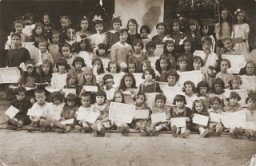
-
The Warsaw Ghetto Uprising
ArticleThe Warsaw ghetto uprising was the largest uprising by Jews during World War II. 100s of ghetto fighters fought heavily armed and well-trained Germans for nearly a month.

-
Purim
ArticleLearn about the background and traditional observances of Purim, a Jewish holiday marking the deliverance of the Jews from a royal death decree.
